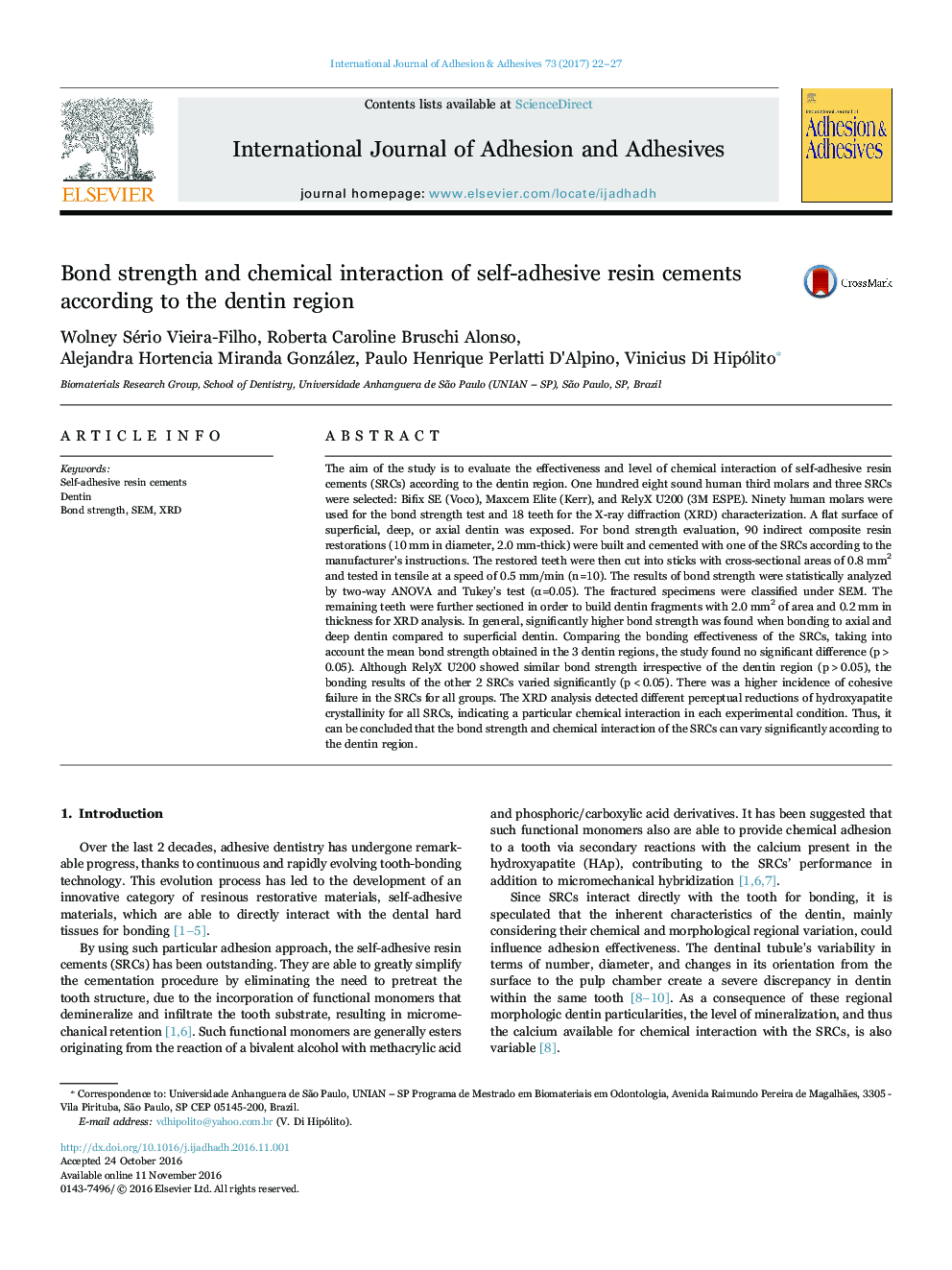| Article ID | Journal | Published Year | Pages | File Type |
|---|---|---|---|---|
| 5014839 | International Journal of Adhesion and Adhesives | 2017 | 6 Pages |
Abstract
The aim of the study is to evaluate the effectiveness and level of chemical interaction of self-adhesive resin cements (SRCs) according to the dentin region. One hundred eight sound human third molars and three SRCs were selected: Bifix SE (Voco), Maxcem Elite (Kerr), and RelyX U200 (3M ESPE). Ninety human molars were used for the bond strength test and 18 teeth for the X-ray diffraction (XRD) characterization. A flat surface of superficial, deep, or axial dentin was exposed. For bond strength evaluation, 90 indirect composite resin restorations (10 mm in diameter, 2.0 mm-thick) were built and cemented with one of the SRCs according to the manufacturer's instructions. The restored teeth were then cut into sticks with cross-sectional areas of 0.8 mm2 and tested in tensile at a speed of 0.5 mm/min (n=10). The results of bond strength were statistically analyzed by two-way ANOVA and Tukey's test (α=0.05). The fractured specimens were classified under SEM. The remaining teeth were further sectioned in order to build dentin fragments with 2.0 mm2 of area and 0.2 mm in thickness for XRD analysis. In general, significantly higher bond strength was found when bonding to axial and deep dentin compared to superficial dentin. Comparing the bonding effectiveness of the SRCs, taking into account the mean bond strength obtained in the 3 dentin regions, the study found no significant difference (p>0.05). Although RelyX U200 showed similar bond strength irrespective of the dentin region (p>0.05), the bonding results of the other 2 SRCs varied significantly (p<0.05). There was a higher incidence of cohesive failure in the SRCs for all groups. The XRD analysis detected different perceptual reductions of hydroxyapatite crystallinity for all SRCs, indicating a particular chemical interaction in each experimental condition. Thus, it can be concluded that the bond strength and chemical interaction of the SRCs can vary significantly according to the dentin region.
Keywords
Related Topics
Physical Sciences and Engineering
Engineering
Mechanical Engineering
Authors
Wolney Sério Vieira-Filho, Roberta Caroline Bruschi Alonso, Alejandra Hortencia Miranda González, Paulo Henrique Perlatti D'Alpino, Vinicius Di Hipólito,
